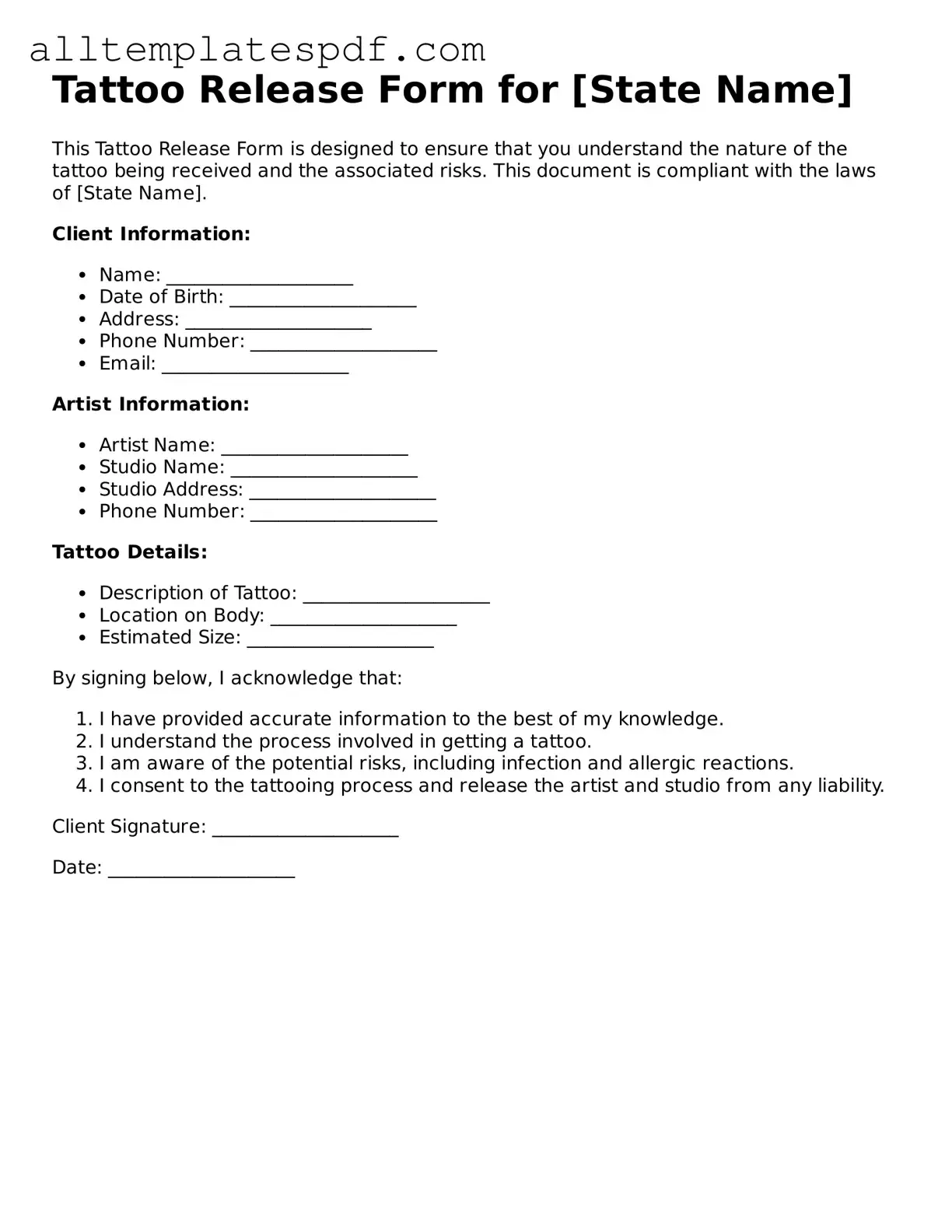When filling out a Tattoo Release form, individuals often overlook critical details that can lead to complications. One common mistake is failing to provide complete personal information. This includes not only the name but also the address and contact details. Incomplete information can delay processing and communication.
Another frequent error is neglecting to read the entire form before signing. Many people rush through the process, missing important clauses or conditions that could affect their rights. Understanding the terms of the release is essential to avoid unexpected consequences later.
Many individuals also forget to check the date on the form. An outdated form can invalidate the release, causing issues for both the artist and the client. Always ensure that the date is current and reflects the day of signing.
Additionally, some people fail to ask questions if they do not understand a section of the form. It is crucial to seek clarification on any terms or conditions that seem unclear. Ignoring this step can lead to misunderstandings about the rights and responsibilities involved.
Another mistake is not keeping a copy of the signed form. Once the release is signed, it is wise to retain a copy for personal records. This can serve as proof of consent and protect against potential disputes in the future.
Lastly, individuals sometimes overlook the importance of witnessing the signature. Some forms require a witness to validate the agreement. Without a witness, the release may not hold up legally, which could complicate matters down the line.
